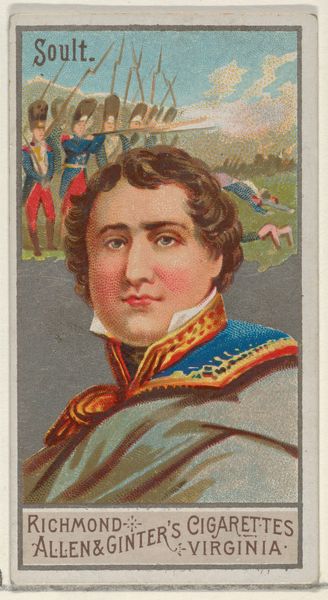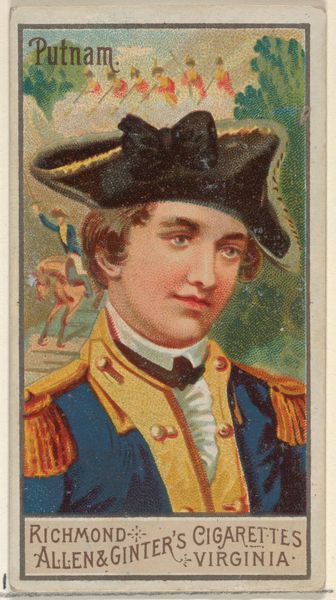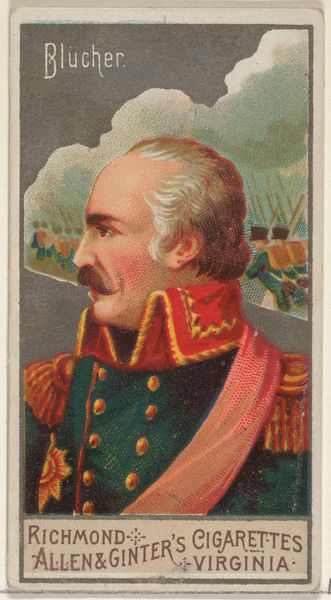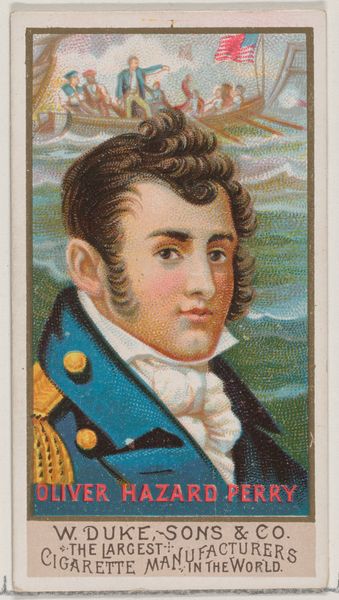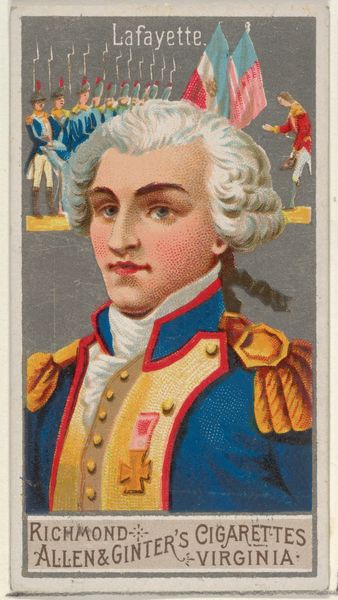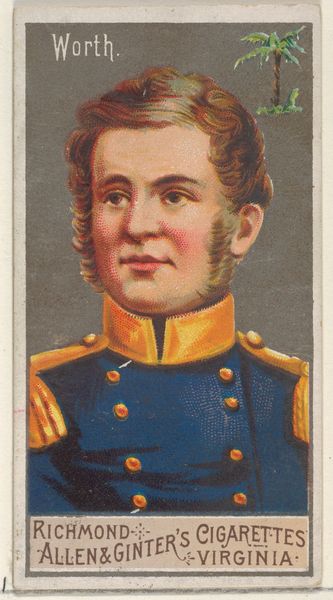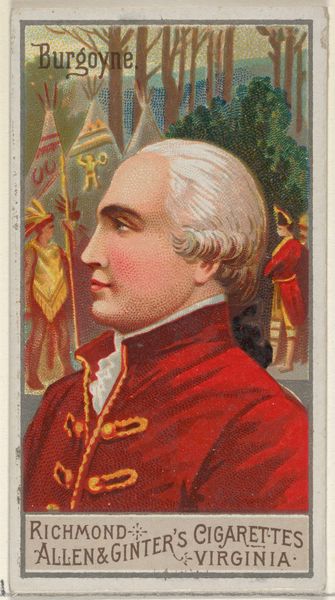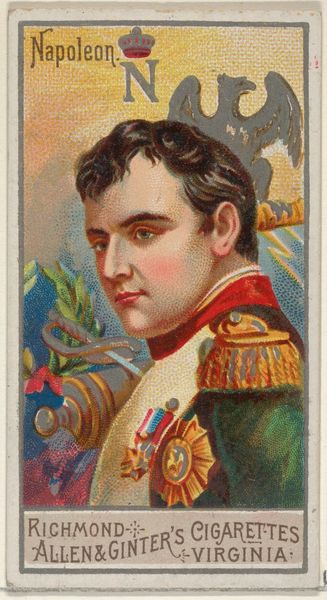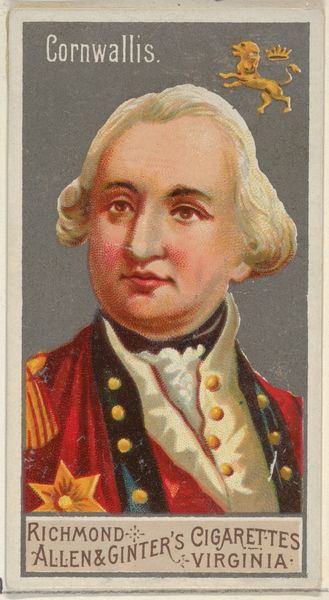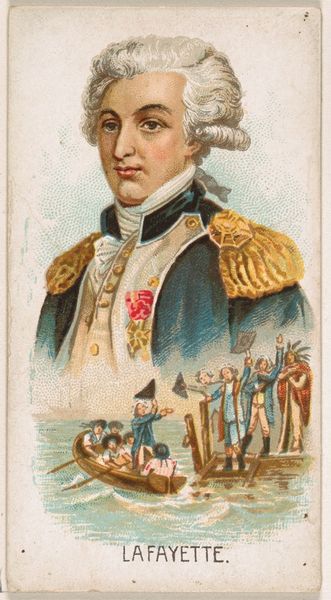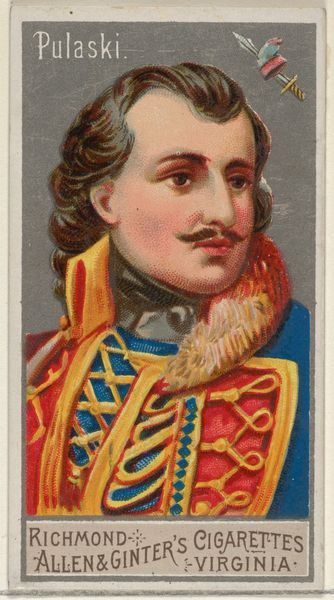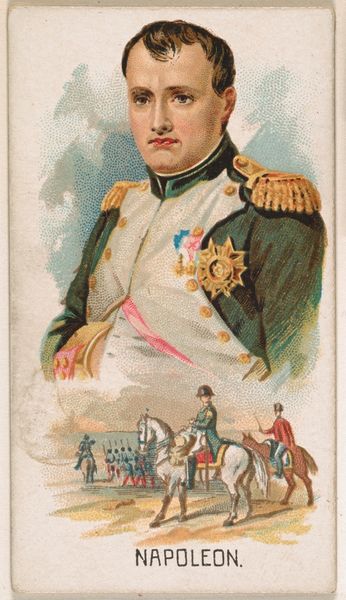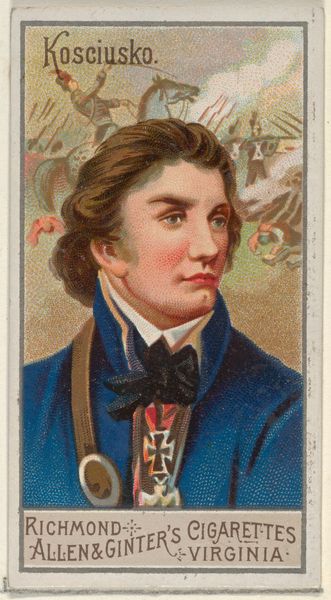
Michel Ney, from the Great Generals series (N15) for Allen & Ginter Cigarettes Brands 1888
0:00
0:00
drawing, print
#
portrait
#
drawing
# print
#
impressionism
#
caricature
#
oil painting
#
men
#
portrait drawing
#
history-painting
#
portrait art
#
realism
Dimensions: Sheet: 2 3/4 x 1 1/2 in. (7 x 3.8 cm)
Copyright: Public Domain
Curator: This print, dating back to 1888, presents us with "Michel Ney, from the Great Generals series." It was created by Allen & Ginter as part of their promotional imagery for cigarette brands. What are your initial thoughts? Editor: It's striking how... rosy he is. An almost caricatured flush to the cheeks, and such an intense gaze. It makes him seem both powerful and slightly vulnerable. Also, knowing it’s a cigarette card changes how I perceive it immediately, giving the piece a propagandistic spin and shifting my understanding of how these great figures were used to build associations between empire, masculinity and smoking. Curator: Precisely! Allen & Ginter weren't necessarily concerned with strict historical accuracy. The 'Great Generals' series served primarily to associate their brand with notions of valor, leadership, and, indeed, imperial power. Notice the opulent uniform, a visual shorthand for authority and martial prowess. How might this imagery be received by different audiences? Editor: Well, the context is key. For contemporary consumers, it’s likely it served to promote this image of Western, male superiority. Looking at this today, I question the celebratory depiction of military figures in trading cards which risks glorifying violence and domination, erasing the human cost of conflict. Curator: I concur that interrogating the narratives woven into such images is crucial. Cigarette cards circulated widely, embedding these visions of power within popular culture. In particular, the artist's choices regarding the vivid coloring contribute to the impression of Ney as an idealized, almost mythical figure. Editor: Absolutely. The subtle landscape painting visible in the background featuring marching soldiers also works towards that impression. Considering this card's mass production, it emphasizes how these visual representations permeated the daily lives of many people. Curator: It serves as a window into the cultural values of the late 19th century, exposing what qualities were valorized and the channels through which those values were propagated. It reminds us that art always operates within a social and political framework, even something seemingly innocuous like a cigarette card. Editor: Indeed. A seemingly simple collectible reveals complex ideologies at play and the lasting legacies of imperialism in contemporary media.
Comments
No comments
Be the first to comment and join the conversation on the ultimate creative platform.
